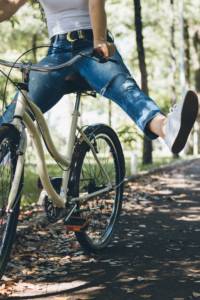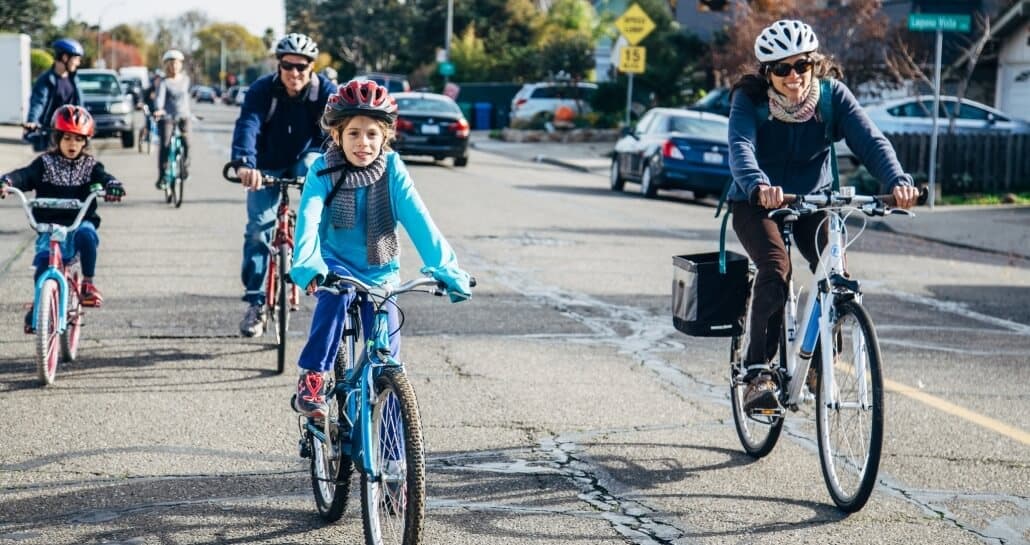In Praise of the Classic Bike
We get some version of this question a lot lately: Does CalBike only support e-bikes? The question comes with a certain amount of tension behind it. Has CalBike turned its back on the original “beautiful machine?”
At CalBike, of course, we still love classic bikes (and walking and all forms of active transportation). We’ve been talking about e-bikes a lot lately because we’ve been working on and thinking about e-bike subsidies, both statewide and local.
But the standard or classic unmotorized bike remains one of the most ecologically friendly means of transportation. Here’s why we love the classic bike.
The most efficient means of transport

Riding a bike is three times as fast as walking and takes one-third as much energy. When the safety bike (basically our modern bike, with a chain drive and two equal wheels) was introduced in the late 1800s, the alternative for personal mobility was a horse or horse-drawn carriage, both of which were too expensive for many to afford.
Unlike horses, bikes require no feed or stable and don’t poop in the street. They can be stored in a minimal amount of space, are easy to maintain, and, if well-built, last for years. When bicycles were first introduced, they were a revolutionary form of transport.
Compared to today’s favored personal transportation (cars), bicycles:
- Require 100% less gas than a petroleum-powered vehicle
- Kill about 40,000 fewer people in the U.S. each year
- Cost 0.75% as much as a car on average ($500 vs. $67,000)
- Provide healthy exercise
- Can be stored or parked in a hallway, bike locker, or rack — no parking spot needed
- Are more fun per mile.
Mobility for the masses
Bike riding and activism have gone together from the start. People on bikes lobbied for the first paved roads in the U.S. years before those roads became dominated by automobiles.
In the late 1800s, feminists saw bicycling as a means for women to gain autonomy. Rather than needing to be taken places by a man, a woman on a bike could go wherever she wanted under her own power.
Susan B. Anthony said: “I think it has done more to emancipate women than any one thing in the world. I rejoice every time I see a woman ride by on a bike.”

In the years since, bicycles have often been associated with advocacy, from Critical Mass to the Black Lives Matter movement.
Why America doesn’t bike

Davis, California, sits at the top of the list of U.S. cities by bike mode share, with 17.48%. Nine other California cities make it to the top 25. But none of our biggest cities make the list — biking infrastructure in Los Angeles is woefully inadequate (though major kudos to LA allies who are working tirelessly to change that), and even more bike-friendly cities like San Francisco have very low bike mode share (2% in 2019).
The reasons are complex, but our built environment is at the root. Copenhagen became a bike city when it built safe infrastructure to support biking. We’re witnessing a similar transformation in real time in Paris over the last few years.
A bike is a bike
At the end of the day, a bike is a bike, whether it’s a featherlight titanium road bike, a family cargo bike, or a slow-pedaling cruiser. Finding the right bike to fit your life can make commuting a delight and running errands a breeze. It’s the closest thing to flying while staying on the ground.
And, if e-bikes open the possibility of riding for people who might not otherwise be able to get around by bike, we welcome them to the fold, not to replace classic bikes but to ride alongside them.
But too few people will get to experience the joy of biking as long as our streets are dominated by speeding cars and trucks and our bike facilities are inadequate and unsafe. So we have a lot more work to do to create space for people walking, riding scooters, pushing strollers, and, of course, riding bikes. We hope you’ll come along for the ride.



